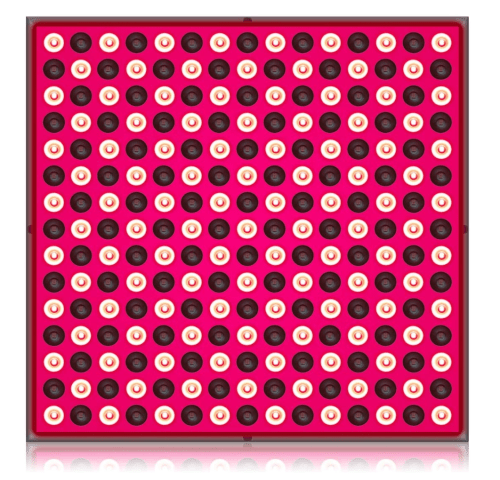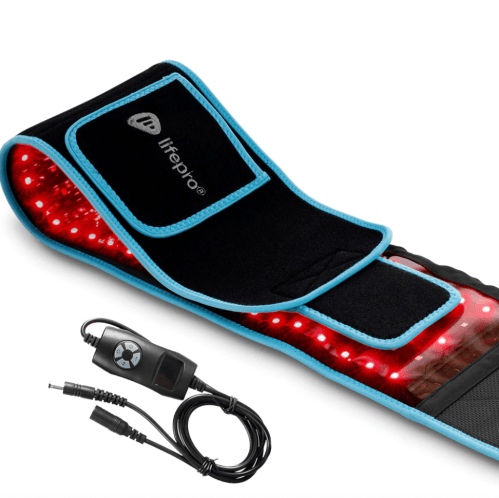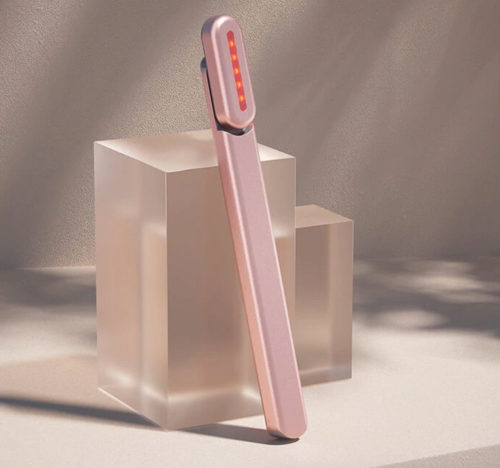Our editors independently select these products. Making a purchase through our links may earn Well+Good a commission
Red Light Therapy Is the New ‘It’ Muscle Recovery Treatment, and Experts Are Giving It the Green Light
Why experts give red light therapy for muscle recovery the green light if you're looking to gain an athletic edge.

Experts agree that nothing (nothing!) will fast-track your post-exercise recovery more than a good night of sleep. But once your Zzzs are dialed in, you can help your body recoup from your workout even more these days with a variety of fancy-shmancy recovery tools. The latest treatment to catch the eyes (er, muscles) of fit-fluencers and professional athletes alike is something called red light therapy.
Experts in This Article
Dan Pardi, PhD, is chief health architect at Restore Hyper Wellness.
Julia Walker, RN, BSN, is a clinical nurse with Paloma Health, an online medical practice focused on hypothyroidism.
“Red light therapy has been around for a while, but in recent months it’s become the new ‘it’ treatment,” says Julia Walker, RN, BSN, with Paloma Health, an online medical practice focused on hypothyroidism. But does red light therapy for muscle recovery actually work, or is it just trendy?
What is red light therapy, exactly?
If you’re a frequent visitor to makeup-Tok or beauty-Tube, you’ve probably heard of LED therapy, or multiple light-emitting diode therapy. But here’s the quick of it: LED therapy is a non-invasive practice of applying light to the external body in order to reap some proposed or proven therapeutic benefit. Red light therapy is a specific type of LED therapy that involves applying low wavelength (you guessed it!) red light to an individual’s skin.
Dan Pardi, PhD, chief health architect at Restore Hyper Wellness, explains: “There are more kinds of light than there are colors of the rainbow. If we look at the light spectrum, the visible spectrum spans from the shortest wavelengths (blue light) all the way to near-infrared light (red light).”
Red light is becoming popular because “it is 90 percent more efficient and effective than any other kinds of light, which means it is more likely to penetrate deeper into the skin,” according to Walker. And unlike certain kinds of light therapies, red light can be used on most skin tones, she says, which means people of all races, ethnicities, and health conditions can use the treatment.
What are the benefits of red light therapy?
Rumor has it that red light can offer both aesthetic and health benefits—and according to dermatologists, healthcare professionals, and personal trainers, the rumors check out. “The wavelengths emitted by this therapy can reach deep into the skin to the mitochondria of the cells,” explains Walker. As you may remember from high school bio (or that viral meme about high school bio), the mitochondria are the energy centers of every cell.
“Mitochondria contain light-sensitive molecules (called chromophores) that are able to absorb the red light, ” explains Dr. Pardi. “So when you are exposed to this type of light, mitochondria are stimulated to produce more ATP, the energy molecule that drives most of our metabolic processes.” The result? Your cells are able to work more efficiently, says Walker.
When your cells have more energy, says Walker, they can produce more collagen, which can reduce skin pigmentation, increase elasticity, and improve complexion. (That’s why red light therapy is sometimes used to treat chronic skin conditions such as psoriasis, she says). Beyond the beauty benefits, red light is also thought to promote cellular repair, improve circulation, and reduce inflammation.
So why are fitness lovers hopping on board?
As popular as red light therapy is amongst beauty gurus, it’s gaining equal traction in fitness circles. “Red light therapy devices are starting to become available at gyms and health clubs,” says Walker. “Often, you can upgrade your gym membership to include access to red light therapy.”
That’s because it may speed up recovery and improve overall performance.
Muscle soreness often occurs when cellular waste accumulates in the muscle cells and causes inflammation, according to the American College of Sports Medicine. Red light therapy may improve blood flow to and from your muscles, helping carry that waste away, says Walker. Ultimately, this reduces muscle inflammation and soreness, allowing athletes to get back to the gym quicker and harder than they would without the therapy, she says. One 2016 study published in the journal Laser Therapy found that college athletes who used red light therapy bounced back from injury nearly twice as quickly as those who did not.
“Red light also triggers the release of nitric oxide,” says Dr. Pardi. This molecule is a vasodilator, meaning it causes the blood vessels to widen. Which, in turn, leads to greater blood flow. “From an athletic perspective, greater blood flow means decreased demand on your heart and muscles, and better delivery of oxygen and nutrients to working muscles,” he explains. In theory, this should help reduce mid-workout exhaustion, which is backed up by the findings in a review published in the journal of Lasers Medical Science which found that athletes who used red light therapy before exercise took significantly longer to get tired from a movement, compared to those who did not.
Are there any downsides?
“This type of light is very safe,” says Dr. Pardi. “While it does penetrate the skin, it does not burn or cause DNA damage.”
Still, as with any health treatment, it’s best to connect with your medical provider ahead of use for clearance. “Your provider will be able to make sure you’re using it safely and are taking additional practical steps toward treating what is concerning or ailing you,” says Walker.
Intrigued? Here’s how to take advantage
There are a number of studios that offer the therapy all over the US, including Perspire Sauna Studio, Restore Hyper Wellness, and The Wellness Studio. There are also a number of red light therapy devices—blankets, beds, belts, wands, panels, and masks—that you can purchase to use on your own.
Get your red light therapy at home

Allisable 45W Red LED Light Therapy Panel — $100.00

AllevaRed Light Therapy Belt — $190.00

SolaWave Advanced Skincare Wand with Red Light Therapy — $149.00
The best part of having a red light therapy device right at home is that you can use it often, which is optimal for exercisers. “While people using it for cosmetic purposes may only use it periodically, athletes training regularly should opt to use it daily to shorten their recovery time,” says Walker.
As for how long to use the device at a time? Consult the instructions and talk to your provider.
Oh hi! You look like someone who loves free workouts, discounts for cutting-edge wellness brands, and exclusive Well+Good content. Sign up for Well+, our online community of wellness insiders, and unlock your rewards instantly.
Sign up for the Well+Good SHOP Newsletter
Get exclusive deals on wellness, beauty, fitness, and food products that have been hand-picked by our editors.
Got it, you've been added to our email list.









